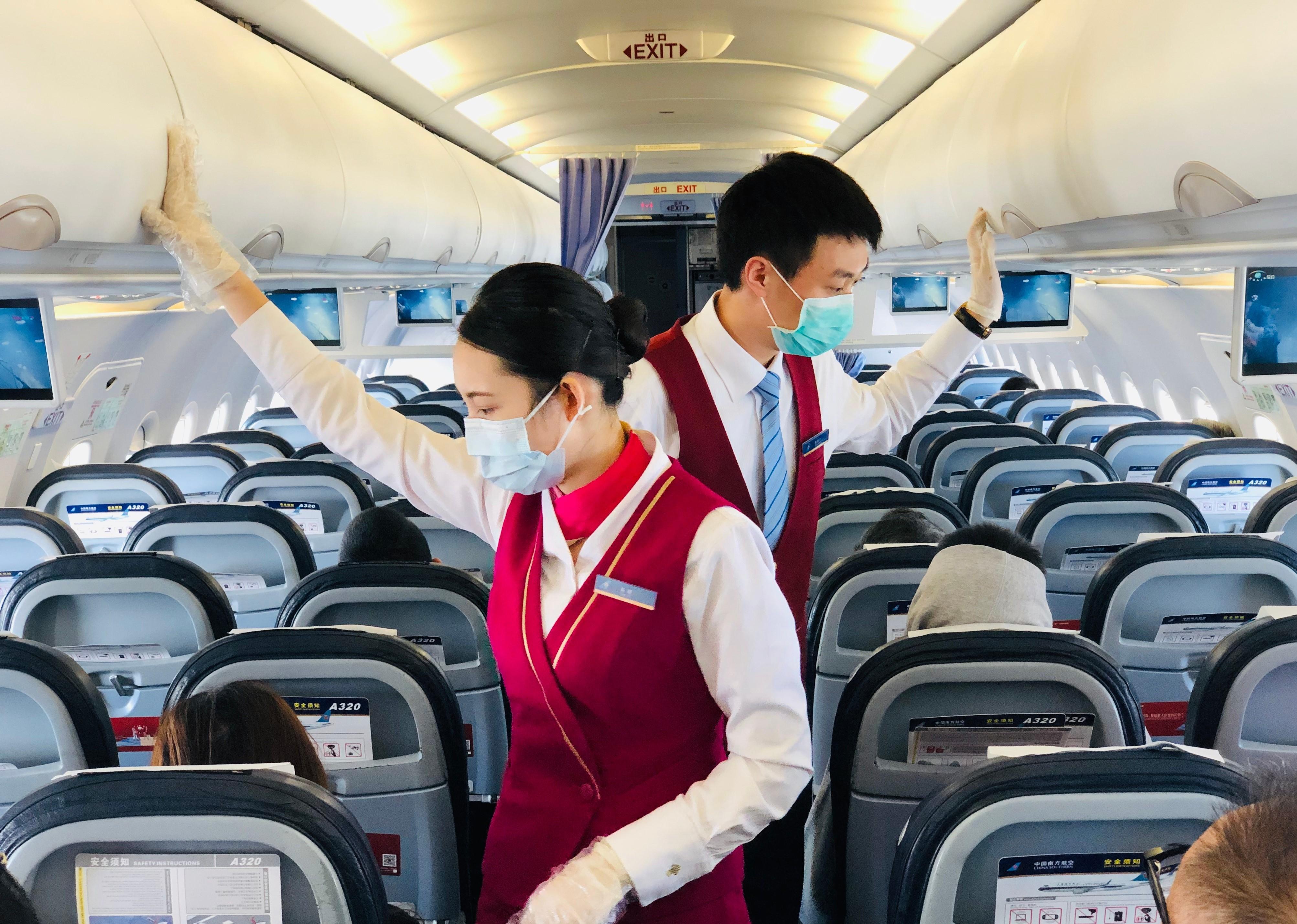
A set of recommended guidelines on public hygiene safety measures for air travel is expected to become public by early June and will likely include the wearing of face coverings from airport arrival through departure.
IATA, in its weekly media briefing May 5, said an ICAO-led aviation task force—which includes representatives from IATA, Airports Council International, the World Health Organization and others—will likely release guidelines “in a couple of weeks” or in June. But IATA is against the idea of not selling middle seats, saying there is no evidence this would increase hygiene safety and would have a damaging economic effect on airlines.
Separately, two U.S. senators proposed legislation May 5 that would establish a joint task force to develop guidelines for safe air travel in the wake of the COVID-19 pandemic. Senators Edward Markey (D-Massachusetts) and Richard Blumenthal (D-Connecticut), both members of the Commerce, Science, and Transportation Committee, announced the Restoring Safety in the Skies Act of 2020 that instructs the Department of Health and Human Services, Department of Homeland Security, and Department of Transportation to create the task force.
IATA, meanwhile, is recommending what it calls a multi-layered approach to additional safety practices that minimizes close contact at the airport, screens passengers and crews via temperature recordings, keeps check-in and bag handling processes contactless, facilitates hand hygiene, and requires passengers and staff to wear face coverings in airports and on board aircraft.
IATA medical adviser David Powell said results from some studies of recent flights in which a passenger was later found to have boarded while already infected with COVID-19 show no evidence of the virus being transmitted to other passengers. In one of the cases, a China Airlines repatriation flight from New York to Taipei, around 340 people were on board including a number that traveled even though they were sick and later tested positive. But Taiwan tracked all passengers from the flight and none who were well prior to boarding contracted the disease.
Powell credits the reason for low transmission cases to a number of factors. Modern airliners have high cabin air flows, with air filtered through HEPAS; people don’t sit face to face and the seat backs provide an effective physical barrier; and passengers mostly stay in their seats and practice cough etiquette and avoid touching.
IATA chief economist Brian Pearce said that if rules were brought in banning airlines from selling middle seats, only 67% of seats on a typical narrowbody with 3-3 seating could be sold. As most airlines need a minimum load factor of 75% to make money, this would create a severe impact on an industry that is already deeply in the red because of the global fleet groundings.
“Fares would have to rise 43%-54% just to break even,” Pearce said.
“Not selling the middle seat would have an enormous financial and operational effect on the airlines and brings no additional guarantee of safety,” IATA CEO and director general Alexandre de Juniac said.
Powell also pointed out that a typical airliner seat is 34 inches wide, so the separation provided by an empty seat would still be considerably less than the usual social distancing recommendations of around six feet.
IATA acknowledged that hygiene rules it is recommending, like wearing face coverings, could be in place for an extended time. However the association wants them to be regarded as temporary measures that would be reviewed regularly.





